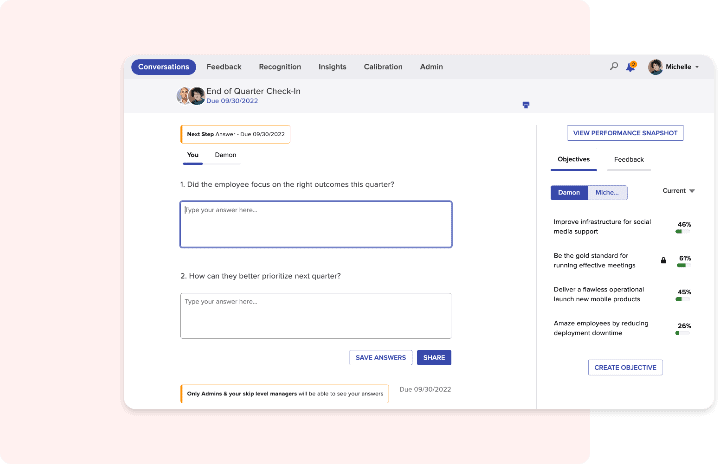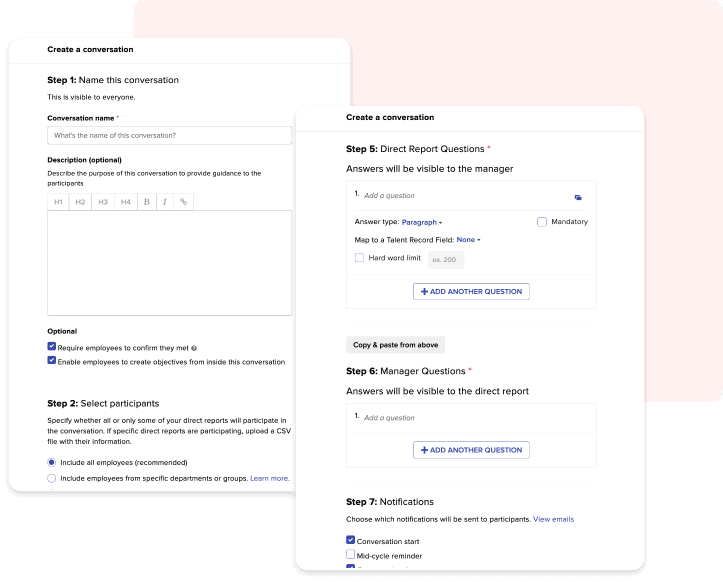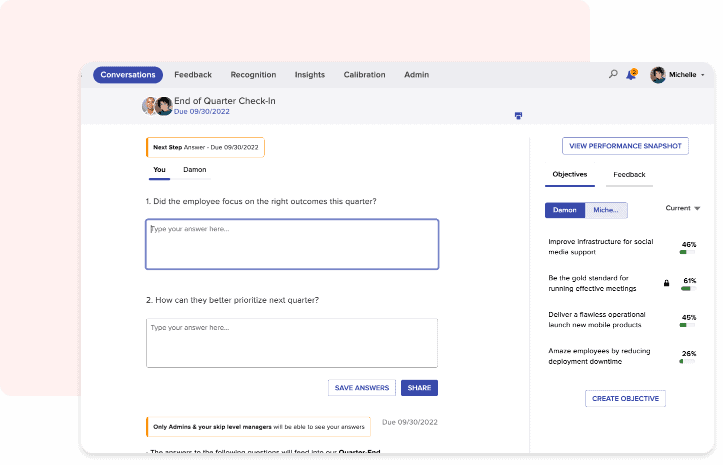Conversations
Boost Connection, Accountability, and Progress
Modernize your existing performance review process by shifting focus to timely and meaningful conversations and check-ins.

Enable employee success with meaningful conversations
Promote purpose-driven and impactful discussions between managers and their direct reports. With collective visibility into employee goals, progress, feedback, and engagement, managers and employees have a holistic view of all the information needed for valuable and productive conversations. The result? Stronger relationships that promote alignment and unlock opportunities.


Empower and develop leaders
Strong, successful leaders are typically excellent coaches. Transform your managers into performance coaches by enabling them to intentionally grow and develop their team members. Managers can use templates and best practices to enhance the depth and quality of conversations with employees.
Empower and develop leaders
Strong, successful leaders are typically excellent coaches. Transform your managers into performance coaches by enabling them to intentionally grow and develop their team members. Managers can use templates and best practices to enhance the depth and quality of conversations with employees.

Upgrade the employee performance review process
Launch and streamline your performance reviews across any cadence. Easy customization enables HR to set up and automate a structure and a set of review questions for the entire company. Monitor progress around the completion of these check-in conversations and ensure high participation rates. Provide credible context for performance conversations with relevant information around employee goals, peer feedback, and more – right at your fingertips.



Within a year we were seeing over 70% participation in check-ins, something we’ve never seen before. We’ve seen employees stay tightly connected with their leaders over this past year, which has led to greater success for the teams overall.

Jeff Andes,
Vice President of Talent Management, University of Phoenix
Vice President of Talent Management, University of Phoenix
Other Betterworks Solutions
Discover our other connected solutions that help you build high-performing teams.
Calibration
Evaluate employees fairly by providing data-driven insight into employee performance, reducing bias, and identifying opportunities to groom talent.
Feedback
Make employees feel set up for success with goal-focused, real-time feedback and inspire them to keep doing their best work through ongoing recognition.
Goals
Align your entire workforce around your organization’s top strategic priorities and drive cross-functional collaboration through transparent goal setting and tracking.
1:1 Meetings
Boost collaboration, alignment, and productivity with a better way to manage and facilitate 1:1 meetings between employees.
Employee Engagement
Build trust by collecting honest feedback from your employees and develop prescriptive action plans that improve their experience.